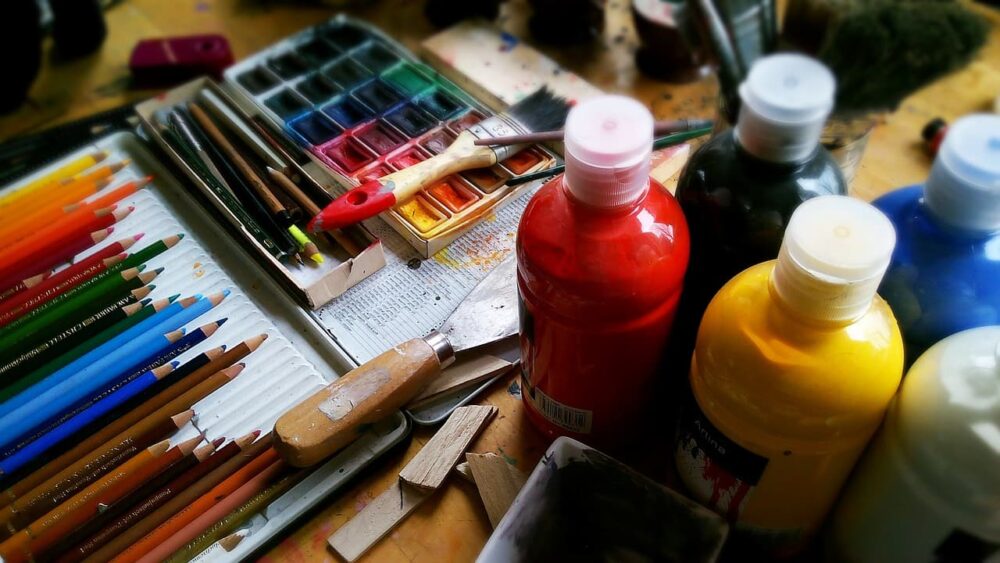The Importance of Music and Art in Daily Life
We encounter works of art all the time in our daily lives. The products of creative activity allow a person to experience emotions, to be penetrated by the feelings of the author. Visiting theaters, exhibitions, museums, we believe that we can get acquainted with the world that is available to the artist, learn to notice and understand things around us that we have not seen before, as well as find ourselves, our ideas and thoughts in works of art, thereby becoming involved in art. So today I’m going to tell you how music and art affect us in our lives.
The Role of Music in Human Life
Music is an integral part of human life; it is part of the human soul. Music has a strong influence on the emotional sphere and the moral world of a person. What is music to a person? It is like the air and warmth of the sun for our ears and soul. It makes us better, inspires and inspires, gives unforgettable feelings. It is through music that a person can relax, rest, get some food for the mind. This kind of art can fundamentally change the mood of a person – to cheer him up, to sadden him, to feel sadness. Music is a source of all kinds of emotions and feelings.
We are surrounded by all kinds of sounds: the noise of trees, the buzzing of bees, the roar of thunder, city noise, the voices of people and animals. And of course, music! Every day most of us listen to different music, which, one way or another, we meet somewhere, whether we want to or not – in the car, bus, supermarket, cinema, in the street – everywhere we go, we are accompanied by the sounds of music. Hardly anyone thinks about the enormous influence music has on our inner world, on our behavior and on our health.
What Is Music?
Music is the art form through which we can convey our moods and feelings, which inspires us to empathize, and which shapes our desire to change the world around us. Music accompanies people throughout their lives. The basic elements and expressive means of music are: melody, rhythm, tempo, dynamics, timbre, harmony, and others.
Music can be defined in different ways, depending on what is taken as the basis. Here is what music is, a scientific-style definition: an art form in which artistic images are conveyed through a particular organization of sounds and silence. This definition may vary, but at the heart of music will always be sound. Music is also called the language of sounds. We can look at the definition of music from the emotional side: music is a medium or a way of communicating emotions and feelings.
Music is a wonderful gift given to mankind. Ask different people what music means to them and you will get different answers. Music can be a means of enjoyment, a way to express oneself, a hobby (when one composes oneself), a life’s work (when one is very passionate about music), etc. When a person hears a melody, he imagines pictures that are only known to him, but meanwhile music affects everyone in the same way, regardless of whether it is classical or any other. It not only makes us feel, it even makes us express these feelings and share our thoughts about what we have heard with others.
Areas of Music
The most complex area of music is classical music. The word “classical” implies that the work contains serious content, addressing eternal issues of human existence. At the heart of classical works are the same moral, religious, and philosophical problems as in the works of artists and writers. Music makes it possible to realize problems not only with the mind but also with the heart, as if to feel them from within, not only to reflect but also to empathize. When we hear the phrase “classical music”, we recall the names of famous composers – the classics.
Classical Music
Classical music is designed for a person who is deeply thoughtful, in tune with the serious. This music excites the human heart and soul, touches the heart, makes you think about love, friendship, life, beauty, and eternity. Classical music is very complex in its content. Most of the classical composers we know have gone through many hardships in their lives. The work of many in their lifetime was not recognized and appreciated.
Art in Our Lives

Art is a reflection of creativity, a way of capturing, hobby, reproducing thoughts, fantasies and reality, requiring a special skill. Art occupies one of the leading positions in human life. It is one of the main ways of manifesting oneself, it shapes the inner world of a person, his spiritual values, fills his life. It is a way to describe and express emotions, feelings, to motivate to action and development.
Art is the soul of humanity and has been around since ancient times, when people expressed themselves in cave paintings. Almost everyone knows since childhood the beautiful classical works of Tchaikovsky, Mozart, Bach, paintings by the unsurpassed Michelangelo, Leonardo da Vinci, authors of literary works, as well as monuments of architecture and sculpture. The feelings that one tries to convey to the world are embedded in art.
The Psychology of Art
The various activities that psychology deals with also include art. Art psychology looks at how the creation and perception of works of art affects human performance. It examines the motives that motivate to create, the process itself, the author’s abilities, his feelings and experiences at the time of creating a work of art. The creators transferred their life problems to music, works of art, on canvas, equated themselves to the characters they created. In art, the formation of the personality of the author himself takes place, which is traced in psychology. Also studied and analyzed how the impact of certain works makes a different impression on people, causes different emotions.

Art is one of the most important stages in the development of society that we can see now. It gives people the opportunity to observe the world from different points of view and to look at familiar things from a different perspective, to understand how people saw the world many centuries ago, as a child or a person of a culture different from ours sees it, to experience the emotions that the author put into his work.
That’s It!
In familiarity with works of art, one develops an aesthetic taste, giving rise to the ability to subjectively evaluate events and phenomena on the basis of one’s own feelings and worldview, aesthetic and ethical views. For example, you can draw miniatures, which is also art. And you can look at paints for drawings here https://yourdiorama.com/best-paints-for-miniatures/. Only on this site, you will find all the detailed information and descriptions of all kinds of paints. This is why music and the arts are so important in our lives! I hope you found this article useful!
